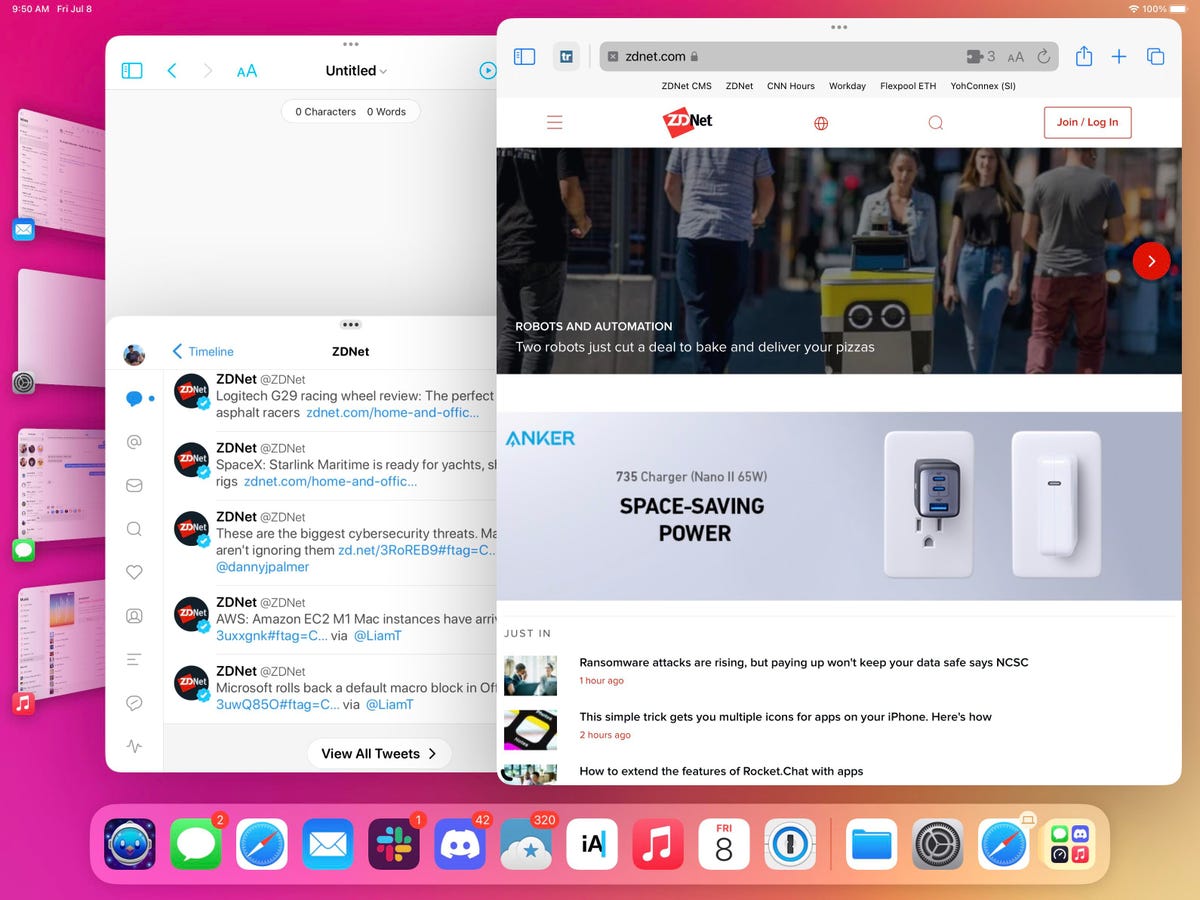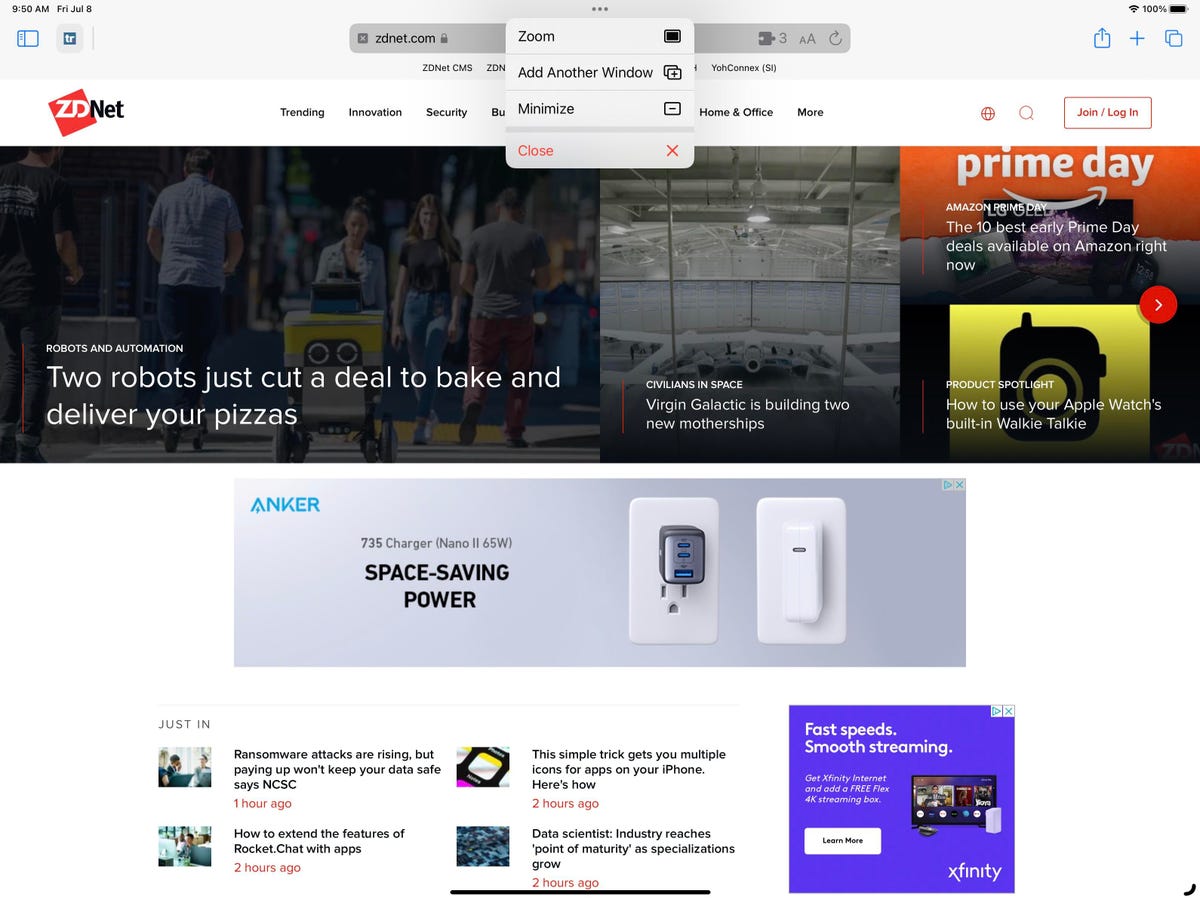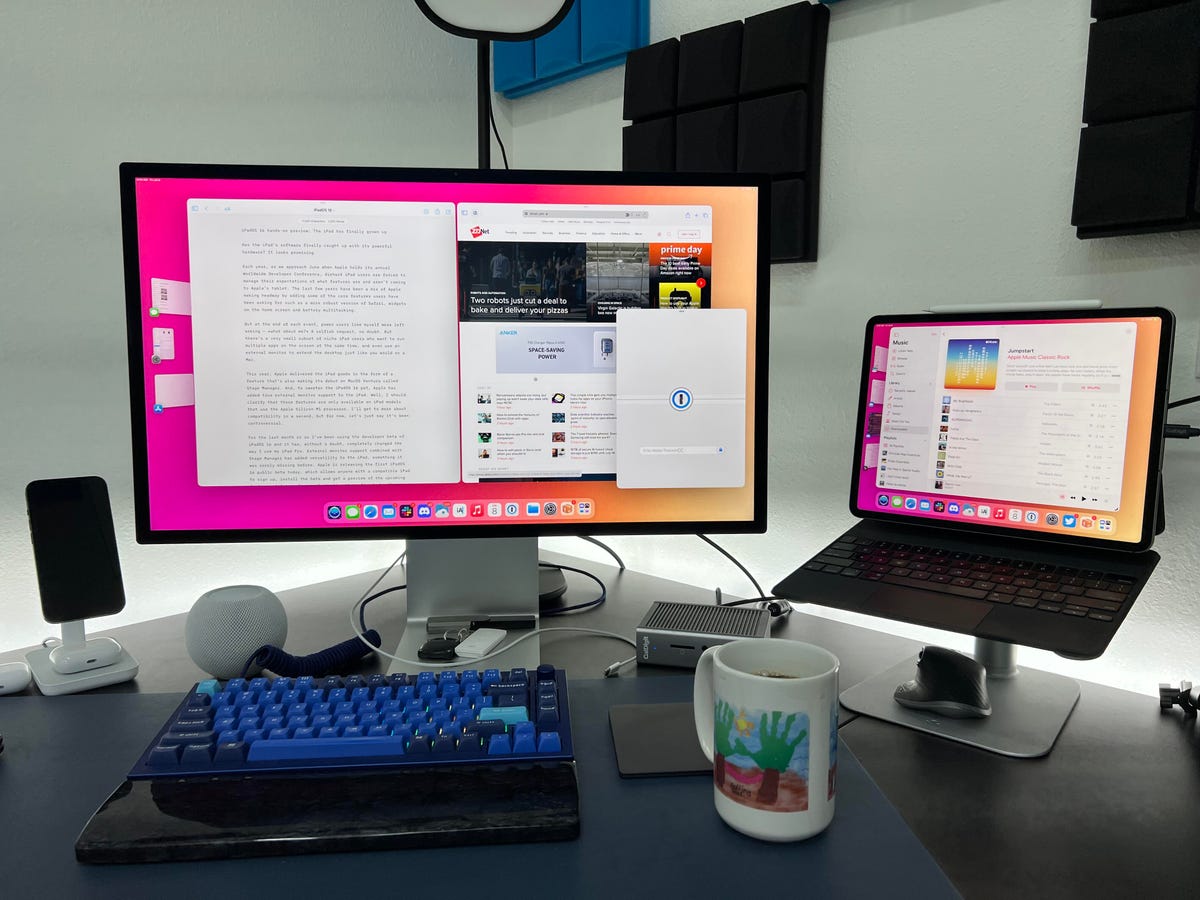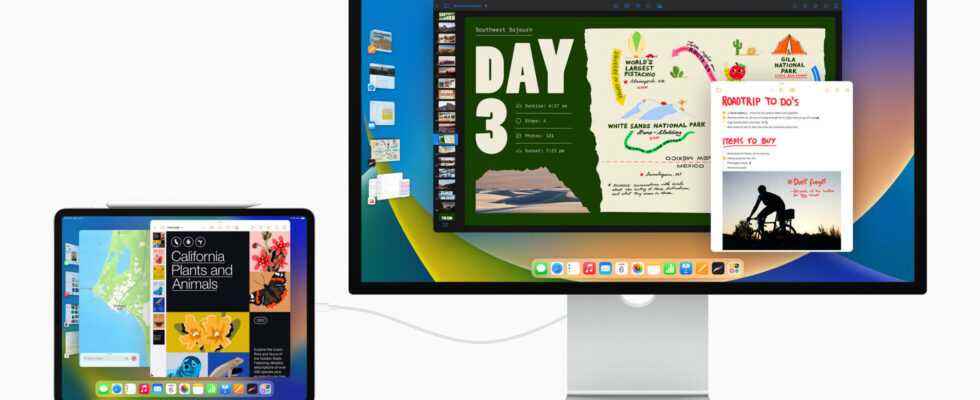Every year, as June approaches, when Apple hosts its Worldwide Developer Conference, die-hard iPad users are forced to manage their expectations of what features will or will not be included in the iPad. Apple.
This year, the iPad is getting a multitasking feature called Stage Manager, which is also making its debut on macOS Ventura. And to top it all off, Apple is making iPadOS 16 truly support external displays. These features are only available on iPad models that use the Apple Silicon M1 processor. I’ll say more about compatibility in a second.
I’ve been using the iPadOS 16 developer beta for about a month, and there’s no doubt that it completely changed the way I use my iPad Pro. Support for external monitors, combined with Stage Manager, makes the iPad more versatile, something it was sorely lacking before.
Apple is releasing the first public beta of iPadOS 16 this week, allowing anyone with a compatible iPad to sign up, install the beta, and preview upcoming features while testing the new version of the OS, thus helping Apple to fix bugs and other problems.
M1 or nothing?
iPadOS 16, Stage Manager, and support for external displays are all limited to Apple’s iPad M1 models. Specifically, it’s the 2021 iPad Pro and the 2022 iPad Air. The reason? So that the iPad can run up to eight apps at once – four on the iPad screen and four on an external display – the M1’s power, faster memory and virtual memory, plus the USB-C/Thunderbolt 4 port on the iPad M1 are among the elements that guarantee a reliable and fast experience.
I get why people are upset that their iPad Pro from just a few years ago is left behind. I find it hard to believe that Apple is doing this just to trick customers into buying a more expensive iPad model. It’s just not the way Apple has done things in the past.
I urge iPad users to read this interview between Matthew Panzarino, Editor-in-Chief of TechCrunch, and Craig Federighi, Senior Vice President of Software Engineering at Apple, which discusses iPad, Stage Manager and the decision to market it only for iPads equipped with M1 technology.

Screenshot by Jason Cipriani/ZDNet.
Internship Manager
The iPad has had multitasking and the ability to use more than one app at a time for quite some time. Split View allows two apps to be used side by side, while Slide Over stores a stack of apps in a single column that can slide to either side of the screen and sit on top of another app. At most, you can have three apps open and running at the same time. It’s functional, but not ideal.
With Stage Manager, Apple makes it possible to have four different apps open and running on the iPad. But instead of each of these apps having their own spot on the screen, the windows are resizable and you can move them around as you see fit. You can drag and drop the edges of an app’s window to resize it, or drag the window using the multitasking button at the top of the screen.
The Stage Manager functionality is not always active. You need to turn it on (or off) in Control Center by swiping down from the top-right corner of the iPad screen.
When Stage Manager is on, apps you open don’t take up the entire screen. They are then displayed in a reduced version, in the form of a window. You can then drag other apps onto that particular “scene” (again, up to four can be open and active on a scene at a time), or you can switch between scenes, including thumbnails are constantly visible and available on the left side of the screen.
In theory, four different apps can be assigned to each step group, and you can quickly switch between work or personal apps just by tapping the preview tile. In practice, having four apps open and running at the same time can get a bit overwhelming.

Screenshot by Jason Cipriani/ZDNet.
If you’re struggling to figure out what to do with apps and windows, and how to manage them, you should get used to pressing the multitasking button in the middle top of every app window. A few different options appear when you press this button, including adding another window to your scene, minimizing this window or application, or making the application full screen using the zoom option.
If your iPad is connected to an external display, another option will let you move that specific app or window to the other display. So if I move an open app to my iPad Pro, it will show up on my connected display, or vice versa.
What I like the most about Stage Manager, even in its beta version, is that all applications that are currently open are actually active. This means that if I have Slack open, but in the background of my Mail and Safari apps, I’ll appear online to my co-workers and continue to receive messages in real time.
A week ago I had a WebEx call open and active on my iPad Pro screen and I was able to switch between apps on an external display without WebEx disconnecting the call or does not obscure the window. Everything worked.
With Stage Manager, Apple brings much of the multitasking functions that were sorely lacking in the iPad. It’s now easier to see which window is currently active and in which I’m going to type, and the ability to see four applications on the screen at the same time will certainly help improve your productivity. It’s not perfect, but it’s still in beta, and Apple still has plenty of time to fix the flaws, most of which I saw or experienced when I used the iPad Pro tethered to an external screen.

Jason Cipriani/ZDNet.
Support for external displays
I’ve been asking Apple for years about the lack of real support for external displays. Each time, I am vaguely told that it is a question of bringing to the iPad the functionalities that users want. I figured I was in the minority and maybe Apple would eventually add support to truly extend the iPad home screen to another monitor. Prior to iPadOS 16, connecting an iPad to a second display only mirrored the iPad screen. Some apps took advantage of an API that allowed for more than just mirroring, but these were rare and not a good experience for most.
As soon as I connect my iPad Pro to an external display, a secondary home screen appears on the screen with Stage Manager already active. At the bottom of the screen is the iPad dock, with the desktop completely empty. There are no folders, files, app icons, or even widgets. (Hopefully widgets make their way to iPadOS 17).
When you start opening apps, you see the same Stage Manager setup as on the iPad itself. On the left side of the screen are thumbnail previews of any other apps or windows you’ve used recently. You can resize windows, with up to four applications running at any given time on the external monitor. These are in addition to the iPad’s four, giving you a total of eight apps running and active at the same time on the iPad Pro.
At the start of the test, I felt like I was tossed between the two screens when I switched from one application to another.
For example, let’s say I’m using Mail to reply to a message using my iPad Pro screen, then I go back to doing something in Safari on an external display. Meanwhile, I access Tweetbot on my iPad screen, which causes Mail to become a tile in the Stage Manager view of the iPad. A few minutes later, I see a new notification on the Mail icon in the dock, so I click on the Mail icon in the dock on my external screen.
I expect to see Mail open and become active in the last place it was used. In this case, I expect it to move to the main app in the Stage Manager view of the iPad. But instead, Mail opens to the screen you used to open the app. In this case, the external monitor.
Writing this, it makes perfect sense that it works this way. Whichever screen you use to open the app is where the app should appear. But for some reason I had a hard time understanding this concept for the first few weeks of use.
I also find it odd that I can’t access Control Center or the notification area on an external display. The battery and status bar icons are present in the upper right corner, and when I hover over them, they turn into something like a button – but clicking them opens the control center on the screen. ‘iPad.
At the top left of the external display is the date and time, and it even registers as a button at the mouse pointer, but clicking it does nothing. Neither on the screen nor on the iPad itself.
The main features of iOS 16 are also present in iPadOS 16
Of course, Apple hasn’t given up on bringing the same major feature updates to iPadOS 16 as they did on iOS 16. Features like the ability to edit or delete messages in the Messages app, or the shared photo library iCloud to share photos with family members are all included in iPadOS 16.
The same goes for Mail’s new features, which are easier to see and use on a larger screen, in part because you can now change the toolbar that most apps use in iPadOS 16. For example, in Mail, you can customize the buttons at the top of the Mail window to do things like reply, forward, mark a message as spam, or set a time to be reminded of an email.
You can even use this awesome new Photoshop feature in the Photos app to remove an object, person, or animal from the background of an image with a single long press. It’s incredibly easy to use, and fun to boot.
While iPadOS 16 is a transformative update for the iPad M1 models, it’s a shame that not all iPad models get the same treatment. Again, I understand the why, but I wish it wasn’t.
That said, for those upgrading to an iPad with the M1 or already owning one, it’s a real treat. Stage Manager and support for external monitors turn Apple’s tablet into a powerful, multitasking machine where it finally feels like the software has caught up with the hardware.
Source: ZDNet.com
